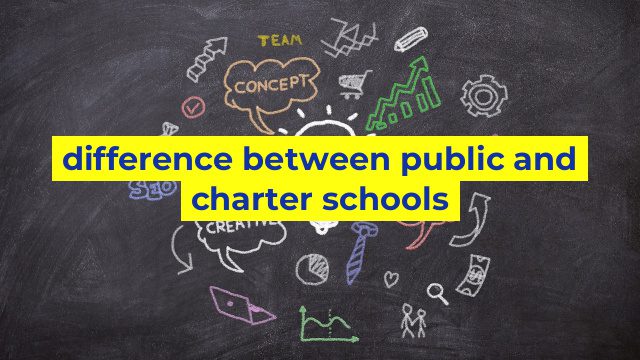Distinguishing Public and Charter Schools: An Overview
When it comes to education, parents in the United States have a range of options, with public and charter schools being some of the most popular. While both types of schools offer a learning environment for K-12 students, there are significant differences worth knowing. Here’s a closer look at the key distinctions between public and charter schools.
What Are Public Schools?
Public schools are government-funded, free of charge, and required by law to admit all students, regardless of background or ability level. These institutions typically have a set curriculum, standardized testing, and state requirements that determine funding and academic standards. Public schools are subject to state and federal regulations, with an elected school board overseeing each district’s operations. While a student’s assigned public school is often based on geography, many schools offer magnet programs for highly talented or motivated students.
What Are Charter Schools?
In contrast, charter schools are independently operated, tuition-free public schools that are typically smaller than public schools in their district. These schools are granted a charter by a state or district, which sets out the institution’s academic standards, goals, and parameters. This autonomy allows charters to offer specialized curriculums, experiment with innovative teaching methods, and offer more personalized attention to students. Charter schools have more flexibility in hiring, curriculum design, and budget management than public schools, as long as they meet their charter’s academic and financial requirements. However, charter schools are subject to state standards and must meet the academic goals outlined in their charter.
Key Differences between Public and Charter Schools
When it comes to the differences between public and charter schools, there are several key distinctions to keep in mind. Public schools are required to adhere to state and federal mandates, including special education mandates and civil rights guidelines, while charter schools have greater flexibility in their offerings but are still held accountable for meeting academic goals. Charter schools have more leeway in their teaching and management methods, such as longer school days or attire requirements, than public schools. Public schools have a more diverse student body, while charter schools may focus on particular niches such as STEM, art or language immersion.
Conclusion
In conclusion, the distinction between public and charter schools is important when considering educational options for your child. Ultimately, parents must choose the type of school that best fits their child’s needs in terms of academic reputation, curriculum, and location, public schools remain the default schooling option for most Americans, but more and more parents are turning to charter schools due to their innovative approach and flexibility. Whatever option parents may choose, a child’s education remains the single most important factor in his or her future success, so careful consideration is necessary.
Table difference between public and charter schools
| Category | Public Schools | Charter Schools |
|---|---|---|
| Funding | Operate with government funding | Operate with government funding and private donations |
| Admissions | Open to all students within a designated geographic area | Admission based on a lottery system, usually open to all students within a designated area |
| Curriculum | Follows state and national standards | Can create their own curriculum to meet the needs of their students |
| Accountability | Mandated to report to the state and federal government | Accountable to their authorizing entity and may have more flexibility in their reporting requirements |
| Teacher Certification | Teachers must be certified by the state | May employ non-certified teachers, but must have a high percentage of certified teachers on staff |
| Governance | Run by local school boards or state education agencies | Operate independently with their own governing boards |


